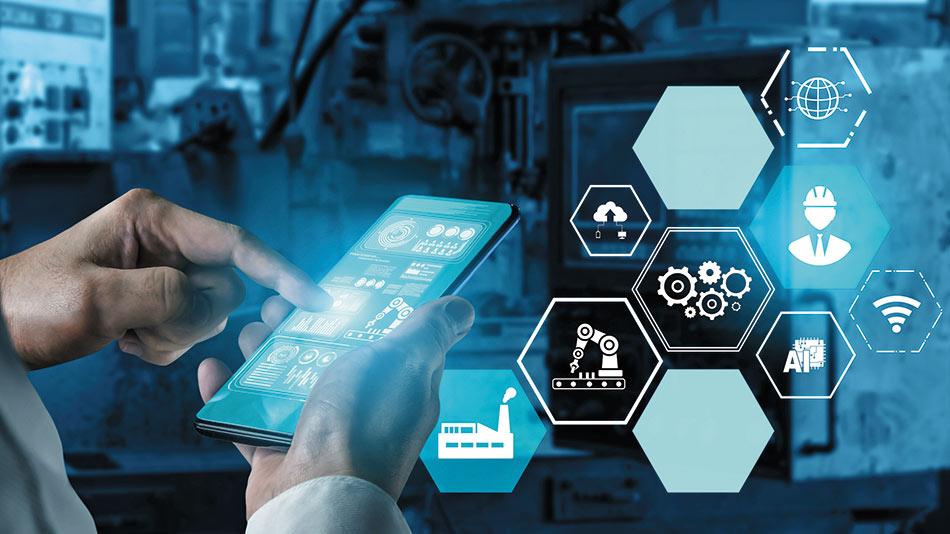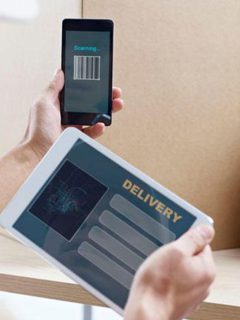In this series of blog posts, we explore the future of logistics with some leading experts. For the first part of this series, we sought to answer the question of how logistics centres will evolve in the city of tomorrow. In this second part, we look at the warehouse itself and examine internal digitalisation and automation.
Today, warehouses are already being equipped with new digital technologies, making it possible to mechanise and even automate many logistics tasks. And, unsurprisingly, these technologies are set to play a major role at the heart of warehouses in the future. What can we expect? Read on to find out from our experts how best to prepare your warehouse for a future brimming with new software, machines and automation.
When robots come to the warehouse
Today’s warehouses are seeing the emergence of a whole new type of employee: the robot. In large-scale warehouses, robots are already replacing human pickers, packers and transporters. A robot or automated system can work 24 hours a day – freeing warehouse operators from certain tasks, so that they can be deployed on missions where humans offer real added value.

Today's world is already much faster than yesterday's - and tomorrow's will be even faster. End customers will increasingly be looking for this speed, especially when they order online. Hence the logistics revolution, already under way, in robotics and automation, which is helping logistics specialists to go faster, while ensuring a high level of quality by reducing the rate of errors in the supply chain.
Jos de Vuyst, CEO of Stow GroupRobots have many useful applications. Techno-robots and AMRs in particular can replace humans in many difficult and non-ergonomic tasks:
- Techno-robots are capable of selecting products from a pallet or plastic bin, and then putting them back into another container. They are key allies in robotic order picking.
- Autonomous Mobile Robots (AMR ) are robots that can analyse the environment to adapt to it and move around in it. These shuttle robots can then navigate independently in warehouses, carrying heavy loads. They are much more flexible, and there is every chance that they will eventually replace conveyor belts.
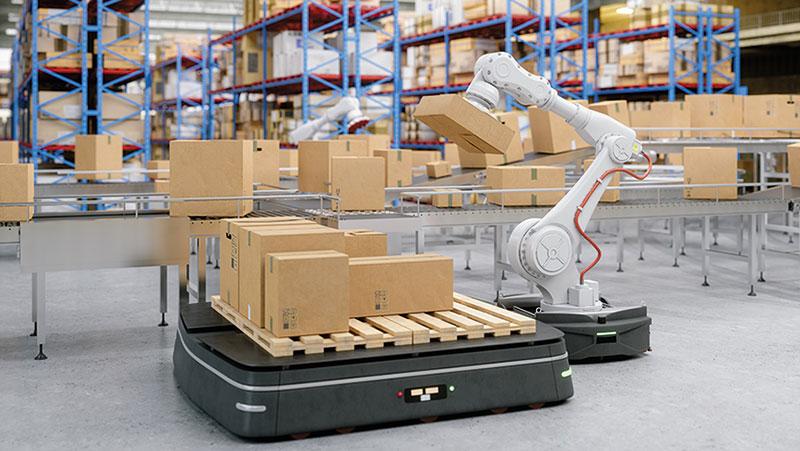
What are the advantages of automation?
The robotisation of warehouses can also be linked to the problems that logistics operators are currently facing in terms of business premises. Robot shuttles are capable ofexploiting surfaces that have been little used or not used at all in the past, such as very great heights that are inaccessible with simple forklift trucks. As a result, the floor area of the warehouse is divided up, without reducing the logistics work area.
It’s difficult to predict the future of logistics robotics over the next 30 years, given the rapid pace at which technologies are evolving. One of these is to take robotisation and automation outside the warehouse, to bring logistics closer to the end consumer.
It’s easy to imagine autonomous, driverless lorries, as well as the more widespread deployment of lockers, connected lockers that allow customers to pick up their goods and manage their returns autonomously. These are all technologies which, as well as ensuring greater logistics productivity and a better customer experience, will help to limit the environmental impact of the logistics sector.

A lot of robotics software today incorporates a layer of Artificial Intelligence, based on machine learning. Eventually, these robots will know what tasks to carry out, without a human even needing to ask them. And we can imagine that, if this technology goes as far as integrating deep learning, the robots could even become 100% autonomous and carry out their own maintenance operations.
Jos de Vuyst, CEO of Stow GroupIncreasingly mechanised order preparation
Today, many logistics operations can be mechanised in the warehouse, from picking topacking. Some warehouses have even decided to automate the whole process, resulting in an order-picking process where no human touches the goods before a driver puts them on a lorry.
In short, automation is currently capable of performing all the tasks that an operator does today, using terminals linked to a Warehouse Management System. And in the years to come, this mechanisation will intensify, to help warehouses become more productive.

The technologies we're seeing deployed in warehouses today have already been around for several years. But now they're being democratised and we're really seeing them arrive in the logistics world, because there's a real need for them (lack of resources, greater customer demands). Mechanisation is one of the elements, and in this line we have adapted to standardise it as much as possible with orders and triggers at the heart of the tool: this makes their implementation easier, faster and more robust. Other technologies, such as RFID, sometimes coupled with mechanisation, facilitate and increase the traceability of information, from capture to distribution. Traceability is no longer a 'nice to have', but an essential requirement at an ever finer level.
Baudouin De Martene, Pre-Sales Consultant at Reflex Solutions
Towards even more intelligent automation
What mechanisation and automation technologies are we going to see gain in power in the coming years? Here’s a quick overview:
- Voice control. Until now, logisticians have been rather reluctant to use this technology, but they are increasingly embracing it. The technology has become much more pleasant for operators, who are much less cut off from their environment. It also makes it possible to collect data on the warehouse: a real benefit for anyone wanting to obtain a reliable overview and predictions on their supply chain. su_spacer]
- Pick-to-light. This technology can now help order pickers to select the right items from the shelves. In its most advanced stage, the parcel is automatically placed on a scale, which checks the weight of the various products to ensure that there are no picking errors.
- RFID (Radio Frequency Identification). At present, barcodes are used in all warehouses to confirm the physical gesture made by the operator, but tomorrow the logistics world will be more mature for RFID. It will be the stock item, the merchandise, which will itself carry the traceability information.
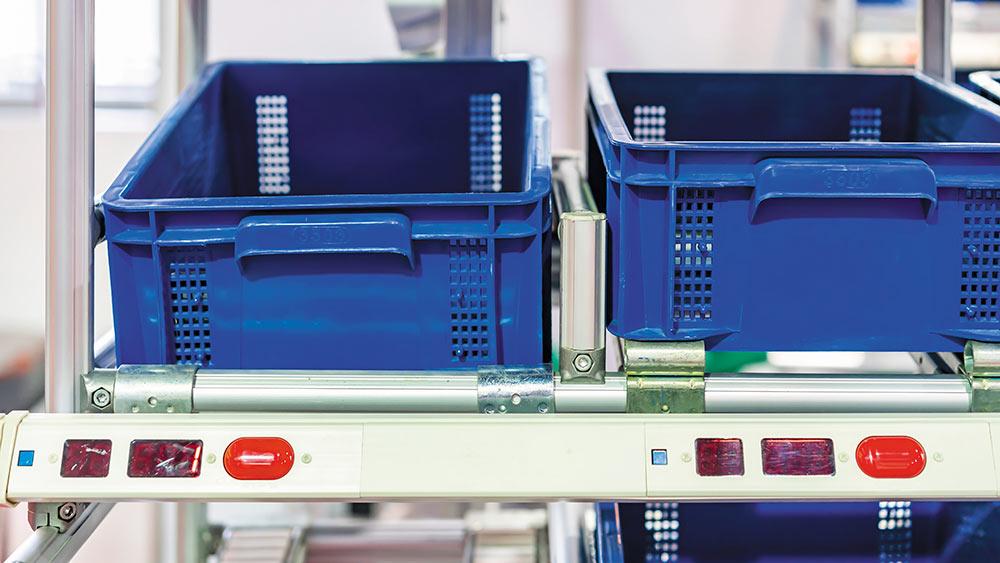
The Internet of Things (IoT) to boost productivity
Already used by consumers on a daily basis in areas such as home automation, the IoT (Internet of Things), or connected objects, are increasingly present in warehouses. These sensors are crucial for automatically capturing data and feeding various IT systems to anticipate logistical problems or avoid unnecessary journeys by operators.
The IoT is proving to be an invaluable ally for logisticians in meeting a number of their challenges:
- Machine Vision uses cameras to detect behaviour or movements, and to automate the collection of information without the need for operator intervention. For example, it is possible to retrace an operator’s entire route to ensure optimum quality control during order preparation, and pinpoint the location of any errors. su_spacer]
- The IoT can be coupled with a CSR strategy to switch off lights or electrical appliances depending on the level of use or movement in certain areas that are more or less used. In this sense, it is a technology that is in line with the ecological solutions of the moment .
- The data captured can be sent to humans to interact with them. The operator is then called upon at the right time to carry out a specific task – for example, to monitor the temperature in a warehouse or in refrigerated lorries, which saves operators a lot of time going back and forth.

The very principle of IoT today is that it responds to small, very specific needs. But when you add up all these needs, these technologies give logisticians a degree of decision-making autonomy, as well as genuine security for the entire supply chain.
Adrien Soulier, Managing Director of WIIO
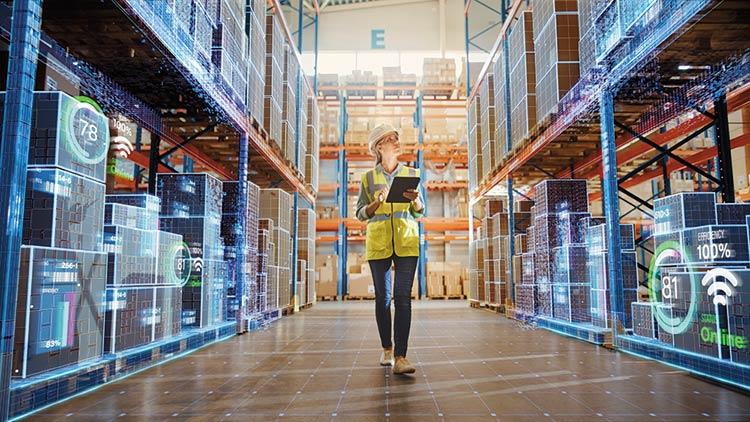
The future of logistics software solutions
As you will have gathered from your reading, one of the major challenges facing logistics in the years ahead is data: the black gold of the 21st century. This data can be used both to control costs and to make predictions, so that processes can be put in place that are more optimised, more competitive and more responsive to market needs.
The future of new software solutions therefore lies in the implementation of artificial intelligence and algorithms, based on machine learning, that enable this data to be put to good use. IoT, robots, automated systems: all these technologies will enable tomorrow’s logistics specialists to collect data. And the more data they have at their disposal, the more they will be able to predict actions:
- on their marketing needs
- on stock sizing,
- on production and sales, for example, depending on the weather or current events.

The software already on the market is process-driven, based on logistics processes. With all the data that can be collected in the warehouse, the aim is to move towards software based on a data-driven or event-driven model. The idea is to enable the logistician to interact at a moment's notice, to be much more agile and flexible and to adapt in real time to the precise situation in which his company finds itself.
Adrien Soulier, Managing Director of WIIOBetter data thanks to automation
It’s the proliferation of technologies that use data that makes it necessary to think about a holistic system, one that can link all these technologies together to centralise all the data. WIIO’s IRIIS Software Suite is a step in this direction: it is a piece of software that makes any technology agnostic, and links different systems together, integrating them into the warehouse with a no-code system. This enables warehouses to be continuously open to innovation and agility.

Today, Warehouse Management Systems are standardised: it is the software publisher who is responsible for creating optimised processes and making them parameterisable for a particular warehouse. Processes are standardised not only in the WMS itself, but also in its exchanges with the ecosystem, for example on mechanised or automated flows. Information from the field is updated in real time throughout the chain, helping to reduce administrative tasks. For example, a parcel can be checked automatically on a conveyor belt, with photos taken, labelling, weight checks, etc., and this information can be used both to guide the physical process (anomaly zone, return, etc.) and traceability, to pass on information to the customer or customer service. This standardisation of processes is already underway and will accelerate in the coming years.
Baudouin De Martene, Pre-Sales Consultant at Reflex Solutions
